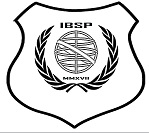Liderança na Segurança Pública
Formação, treinamento e desenvolvimento de líderes
DOI:
https://doi.org/10.36776/ribsp.v6i16.217Keywords:
Liderança, Doutrina militar, Liderança militar, Polícia MilitarAbstract
The objective of this article is to present leadership as an innate capacity and acquired through education, training and development in Public Security institutions, especially military police, which, due to their uniqueness, need leaders with a holistic vision and who respond promptly in complex situations. To achieve this objective, through narrative review, the importance of military doctrine in the training of military police officers and the development of military leadership is summarized, exemplifying what the process of training and training of leaders is like in three American military institutions. Unlike Brazilian institutions, American institutions develop actions throughout the careers of their employees that seek to develop leadership capacity to increase quality and effectiveness in the provision of services. It is concluded that leadership must be fostered in Brazilian Public Security institutions, which are increasingly faced with non-routine missions that involve risk to the lives of victims and their troops.
References
AVOLIO, Bruce J.; GARDNER, William L. Authentic leadership development: Getting to the root of positive forms of leadership. The Leadership Quarterly, vol. 16, no 3, p. 315–338, jun. 2005. https://doi.org/10.1016/j.leaqua.2005.03.001. DOI: https://doi.org/10.1016/j.leaqua.2005.03.001
BENNETT, Nathan; LEMOINE, G. James. What a difference a word makes: Understanding threats to performance in a VUCA world. Business Horizons, vol. 57, no 3, p. 311–317, maio 2014. DOI 10.1016/j.bushor.2014.01.001. Disponível em: https://www.sciencedirect.com/science/article/pii/S0007681314000020. Acessado em: 17 out. 2023. DOI: https://doi.org/10.1016/j.bushor.2014.01.001
BOLDEN, Richard. What is leadership development: purpose and practice? Exeter, United Kingdom: [s. n.], 2005. Disponível em: http://centres.exeter.ac.uk/cls/documents/LSWreport2.pdf. Acessado em: 2 ago. 2023.
BRASIL. Manual de Campanha C20-10 - Liderança Militar. Brasília, DF, Brasil: Estado-Maior do Exército, 24 ago. 2011.
BRASIL. ESCOLA SUPERIOR DE GUERRA. Manual Básico da Escola Superior de Guerra. 1998o ed. Rio de Janeiro: ESG, 1998. vol. 1, .
BUILDER, Carl H.,; BANKES, Steven C.; NORDIN, Richard. Command Concepts A Theory Derived from the Practice of Command and Control. Washington: Paperback, 1999.
CAMARGO JÚNIOR, Raimundo Nonato Colares; SILVA, Wellinton Conceição da; SILVA, Éder Bruno Rebelo da; SÁ, Pedro Rodrigues de; FRIAES, Ellen Peixoto Pinon; COSTA, Brenda Oliveira da; ROCHA, Clarisse Beltrão Rosas; SILVA, Louise Cristhine Monteiro Silva da; BORGES, Daniel Clarismundo; CRUZ, Simone Lobato Ferreira da; NINA, Leonice Maria Bentes; OLIVEIRA JÚNIOR, José Antônio. Revisão integrativa, sistemática e narrativa: aspectos importantes na elaboração de uma revisão de literatura. Revista ACB: Biblioteconomia em Santa Catarina, vol. 28, no 1, dez. 2023. Disponível em: https://brapci.inf.br/index.php/res/v/224932. Acessado em: 17 out. 2023.
CHAMBERS, John. Liderança e noções de militar. In: The Oxford Companion to American History Militar. [S. l.: s. n.], 2000. Disponível em: Encyclopedia.com. Acessado em: 21 fev. 2010.
CHINN, Peggy L. The traditional literature review. Nurse Author & Editor, vol. 31, no 3–4, p. 62–64, dez. 2021. DOI 10.1111/nae2.29. Disponível em: https://onlinelibrary.wiley.com/doi/full/10.1111/nae2.29. Acessado em: 17 out. 2023. DOI: https://doi.org/10.1111/nae2.29
DAY, David V. LEADERSHIP DEVELOPMENT: A REVIEW IN CONTEXT. Leadership Quarterly, vol. 11, no 4, p. 581–612, 2001. . DOI: https://doi.org/10.1016/S1048-9843(00)00061-8
EGGENBERGER, J.C. Toward A General Model of Military Leadership for the Canadian Armed Forces. Kingston, Ontario: [s. n.], 1979. Disponível em: https://rusiviccda.org/toward-a-general-model-of-military-leadership-for-the-canadian-armed-forces/. Acessado em: 2 ago. 2023.
FERRARI, Rossella. Writing narrative style literature reviews. Medical Writing, vol. 24, no 4, p. 230–235, dez. 2015. DOI 10.1179/2047480615z.000000000329. Disponível em: https://journal.emwa.org/writing-for-lay-audiences/writing-narrative-style-literature-reviews/. Acessado em: 17 out. 2023. DOI: https://doi.org/10.1179/2047480615Z.000000000329
FOUREAUX, Péricles de Souza; SOUZA, Mozart Luiz Soares de; COSTA, Alcino Lagares Cortes; MIRANDA, Josemar Trant de; REIS, Marco Antônio Gomide; MACHADO, Marcos Aurélio. Manual de Trabalho de Comando (MTP – 11 – 2 – PM). Belo Horizonte: Polícia Militar de Minas Gerais, 1990.
GÓMEZ, Emiliano. Liderança Ética. Um desafio de nosso tempo. São Paulo: Editora Academia de Inteligência, 2008.
GRANT, Maria J.; BOOTH, Andrew. A typology of reviews: An analysis of 14 review types and associated methodologies. Health Information and Libraries Journal, vol. 26, no 2, p. 91–108, jun. 2009. https://doi.org/10.1111/j.1471-1842.2009.00848.x. DOI: https://doi.org/10.1111/j.1471-1842.2009.00848.x
GREEN, Bart N; JOHNSON, Claire D; ADAMS, Alan. Writing narrative literature reviews for peer-reviewed journals: secrets of the trade. Journal of Chiropractic Medicine, vol. 5, no 3, p. 101–117, 2006. Disponível em: https://www.ncbi.nlm.nih.gov/pmc/articles/PMC2647067/#. Acessado em: 17 out. 2023. DOI: https://doi.org/10.1016/S0899-3467(07)60142-6
LAGACE, Martha. How the U.S. Army Develops Leaders. 7 abr. 2003. Harvard Business School. Disponível em: https://hbswk.hbs.edu/item/how-the-u-s-army-develops-leaders. Acessado em: 2 ago. 2023.
MARCUS, Leonard J.; MCNULTY, Eric J; HENDERSON, Joseph M.; DORN, Barry C. You’re It_ Crisis, Change, and How to Lead When It Matters Most. 1o ed. New York: PublicAffairs, 2019.
PARÉ, Guy; TRUDEL, Marie Claude; JAANA, Mirou; KITSIOU, Spyros. Synthesizing information systems knowledge: A typology of literature reviews. Information and Management, vol. 52, no 2, p. 183–199, 2015. DOI 10.1016/j.im.2014.08.008. Disponível em: https://www.sciencedirect.com/science/article/abs/pii/S0378720614001116. Acessado em: 17 out. 2023. DOI: https://doi.org/10.1016/j.im.2014.08.008
STRATTON, Samuel J. Literature Reviews: Methods and Applications. Prehospital and Disaster Medicine, vol. 34, no 4, p. 347–349, 1 ago. 2019. DOI 10.1017/S1049023X19004588. Disponível em: https://www.cambridge.org/core/journals/prehospital-and-disaster-medicine/article/literature-reviews-methods-and-applications/70581E0B68B491693E8360DE39E0D6E4. Acessado em: 17 out. 2023.
UNITED STATES GOVERNMENT. Personnel-General Army Profession and Leadership Policy. Army Publishing Directorate. United States: [s. n.], 4 maio 2017. Disponível em: https://armypubs.army.mil/epubs/DR_pubs/DR_a/pdf/web/ARN3758_AR_600-100_FINAL_WEB_.pdf. Acessado em: 31 jul. 2023.
U.S. AIR FORCE. Leaders aren´t born, they´re made in Air Force ROTC. 2 ago. 2023. U.S. Air Force. Disponível em: https://www.afrotc.com. Acessado em: 1 ago. 2023.
WONG, Leonard; BLIESE, Paul; MCGURK, Dennis. Military leadership: A context specific review. The Leadership Quarterly, vol. 14, no 6, p. 657–692, dez. 2003. https://doi.org/10.1016/j.leaqua.2003.08.001. DOI: https://doi.org/10.1016/j.leaqua.2003.08.001
Downloads
Published
How to Cite
Issue
Section
License
Copyright (c) 2023 Julival Queiroz de Santana, Francisco Antonio Pereira Fialho

This work is licensed under a Creative Commons Attribution-NonCommercial 4.0 International License.



